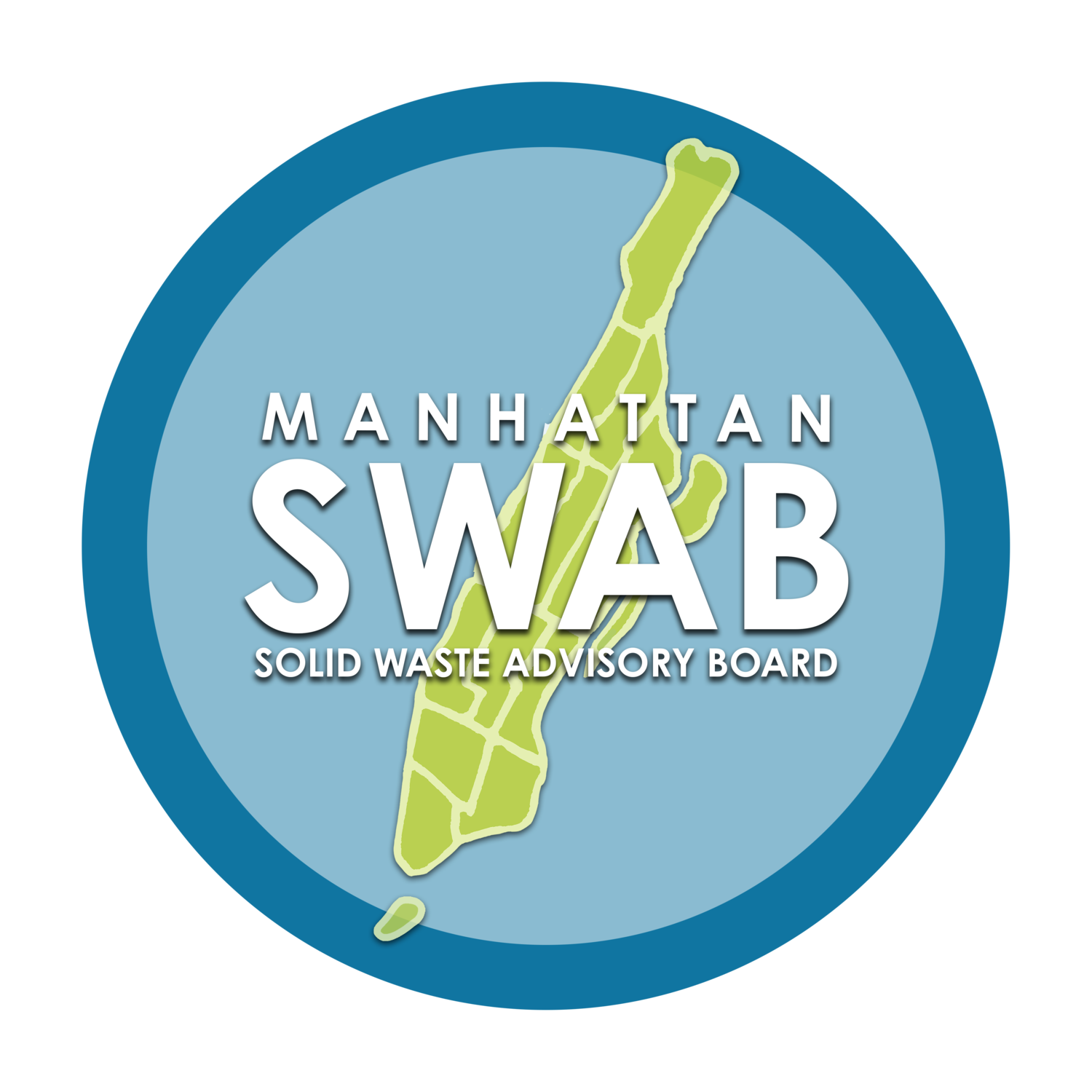How can NYC get to zero waste?
By 2030, climate change will cause Manhattan and other parts of NYC to flood every five years rather than every 500 years.
The Zero Waste Hierarchy
Developed by Zero Waste Europe, this hierarchy looks at 7 strategies to help tackle materials & waste management. The goal of this system is to ‘change the mindset from waste management to resource management.’
There is no waste, only unused resources!
To combat the trends of climate change, NYC leadership has released a number of plans to make the city more sustainable and work toward zero waste.
In 2006, DSNY released a 20-year Solid Waste Management Plan (SWMP) with the goal of developing a cost-effective, reliable, and environmentally sound system for managing NYC’s waste.
In 2017, the DeBlasio administration released the OneNYC 2050 document. It set a goal to reduce emissions 80% by 2050 and halt waste going to landfill and incineration by 2030.
In 2020, NYC’s City Council released a “Securing Our Future” plan to communicate actionable strategies to move NYC toward a Circular Economy model.
Building upon these plans, the MSWAB supports the following solutions to help NYC achieve a zero waste future, grouped from most to least sustainable .
-
The most efficient way to avoid landfilling waste is to avoid producing it in the first place. Reduce consumer demand.
Outreach campaigns are needed to emphasize waste impacts of products rather than just their cost or features.
Rethink product and packaging design. Manufacturers must be encouraged to shift from designing single-use, disposable products to durable, reusable ones. Some “packageless” stores in NYC are beginning to sell bulk goods in a BYO-package format.
Material bans. Certain materials are environmentally toxic and can never break down in landfills and thus should not be produced. NYC took significant strides by banning Foam and Plastic Bags in the last several years.
Extended producer responsibility -Policies that shift responsibility for managing discarded products and packaging from the wider taxpayer base to the manufacturers and consumers responsible for generating the waste are on the rise. Two bills were introduced in NY State in early 2020 to promote EPR.
Circular economy business models. Private firms are pioneering new business models based on resource recovery, product life extension, sharing platforms and product as a service.
Pay As You Throw / Save As You Throw. These policies charge users for waste disposal and make recycling free or low cost. NYC has been studying these models for several years, but has yet to implement them.
-
If products must be created and consumed, it is more efficient to repair or find new uses for them at the end of their life rather than throwing them in the trash. NYC’s reuse efforts are showcased in the city’s 2019 Reuse Sector Report
Right to Repair. Promote legislation that ensures that consumers seeking to repair goods like electronics can allow independent repair shops to repair items and buy the parts needed to do so - which current legislation prohibits in favor of manufacturers.
Product repair facilities. Provide or offer financial assistance to repair centers to provide the population with options for reusing items rather than discarding them.
Repair education. Sponsor programs that teach people how to mend clothing and repair small household items - skills that many modern consumers do not possess.
Product evaluations and certification. Expand evaluations and certifications for pre-owned goods to provide consumers with confidence to buy second-hand items.
Product reuse and sharing infrastructure. Develop and support programs where citizens can swap, rent, borrow, donate, barter, or thrift unwanted items. DonateNYC maintains a list of opportunities to buy, rent, share, and donate surplus goods.
Secondary and surplus food us. Support programs that match those with too much food with non-profits and other organizations that need excess food.
Container deposits. Policies like the bottle deposit that provide financial incentive for collecting and returning and nonrefillable containers,
-
Recycling is less energy efficient than other methods for avoiding zero waste, but is an important component in averting waste from landfills.
Mandates for universal recycling and participation. Lobby for policies that mandate recycling of all possible materials and universal participation in recycling programs.
Enforcement. DSNY needs a larger budget to enforce existing recycling laws and punish those who do not comply.
Education and outreach. Allocate additional budgetary resources to education and outreach programs to teach the populace what can be recycled.
Materials recovery facilities. Construct new facilities to deal with recycling of hard-to-recycle materials that are not covered under the current system.
Residential Recycling. Leverage these resources to improve recycling in multi-family buildings.
NYCHA Recycling. Encourage New York City Housing Authority complexes to expand their recycling programs; only 15% of complexes have recycling bins.
Zero waste design guidelines. Consult the Zero Waste Design Guidelines to construct buildings and urban spaces to facilitate easy movement and transport of recyclable materials.
Dual bin, fuel efficient trucks. Mandate that DSNY switch its fleet to dual bin, fuel efficient trucks.
-
Composting and Anaerobic Digestion break down food waste into soil and energy, respectively. Even though 30% of NYC’s waste is compostable, the city does not offer universal compost pickup.
Petition for universal curbside pickup of food scraps and yard waste and to save the existing compost program.
Arrange for collection of organics (food scraps, yard waste and food-soiled paper) in your building.
Drop off organics at GrowNYC greenmarkets, community gardens, or other sites.

